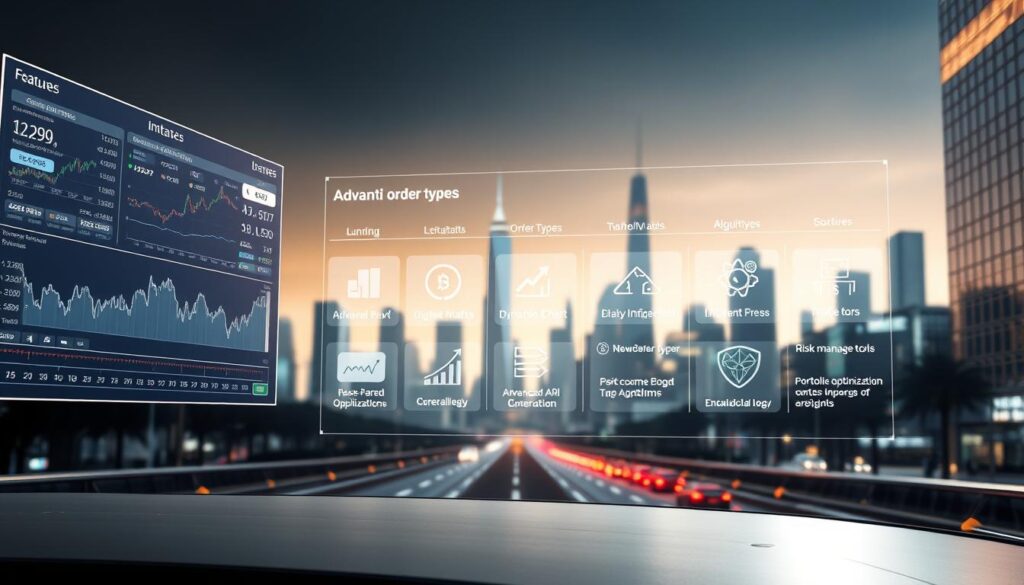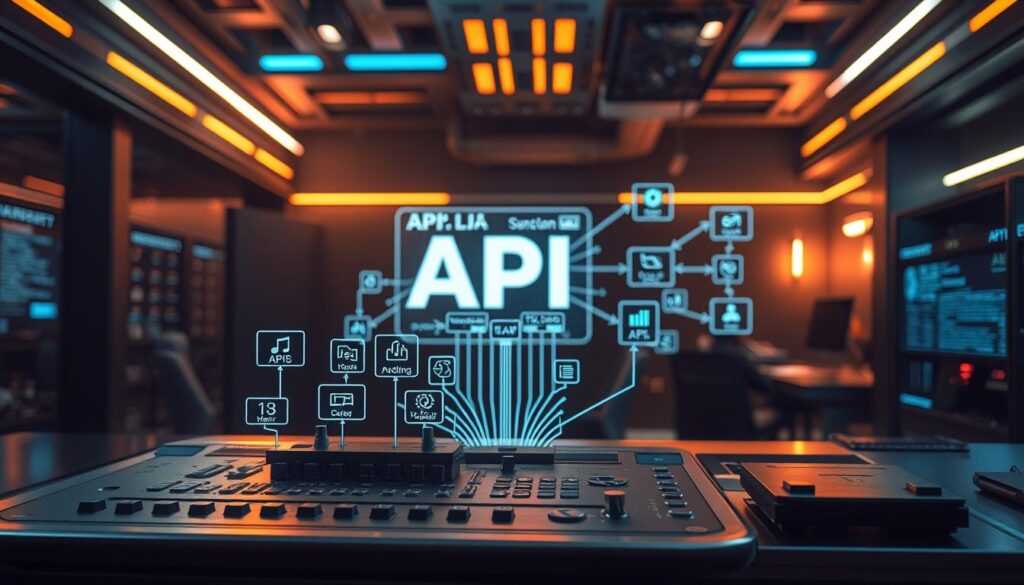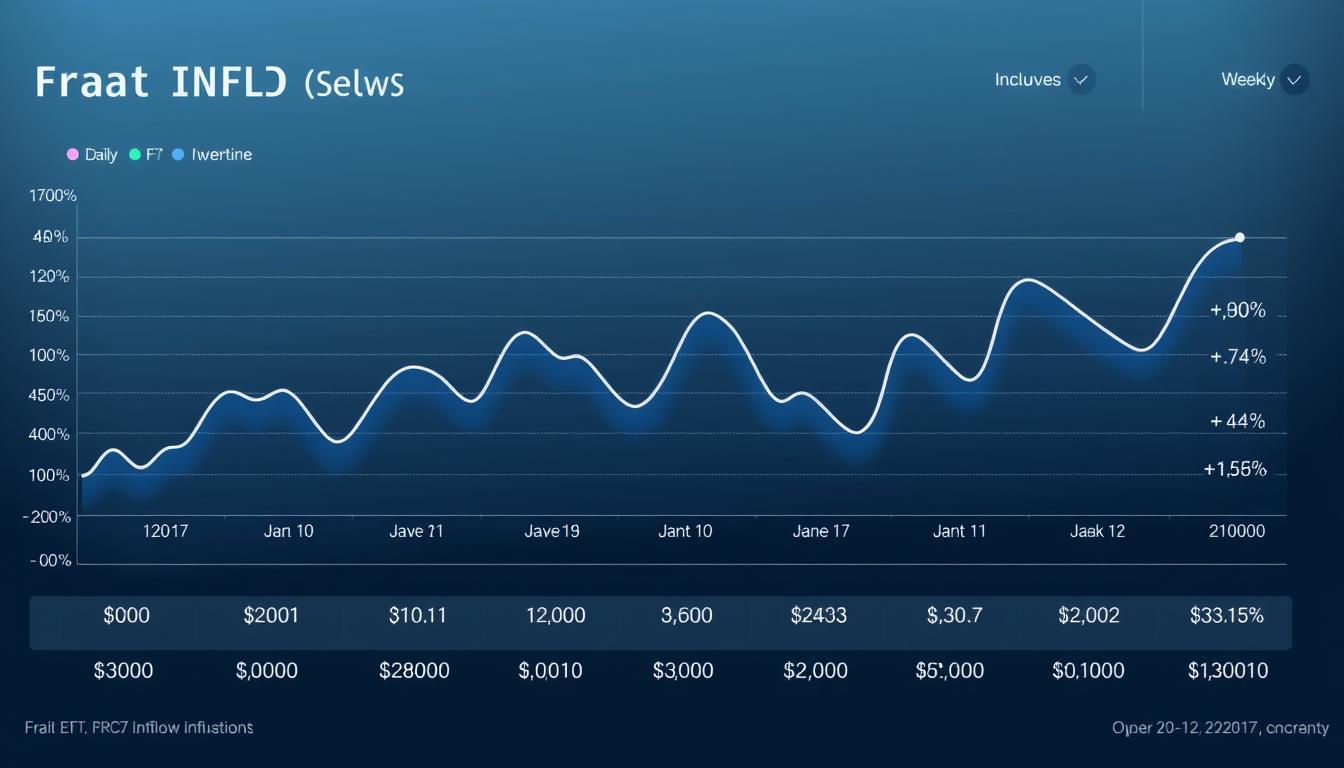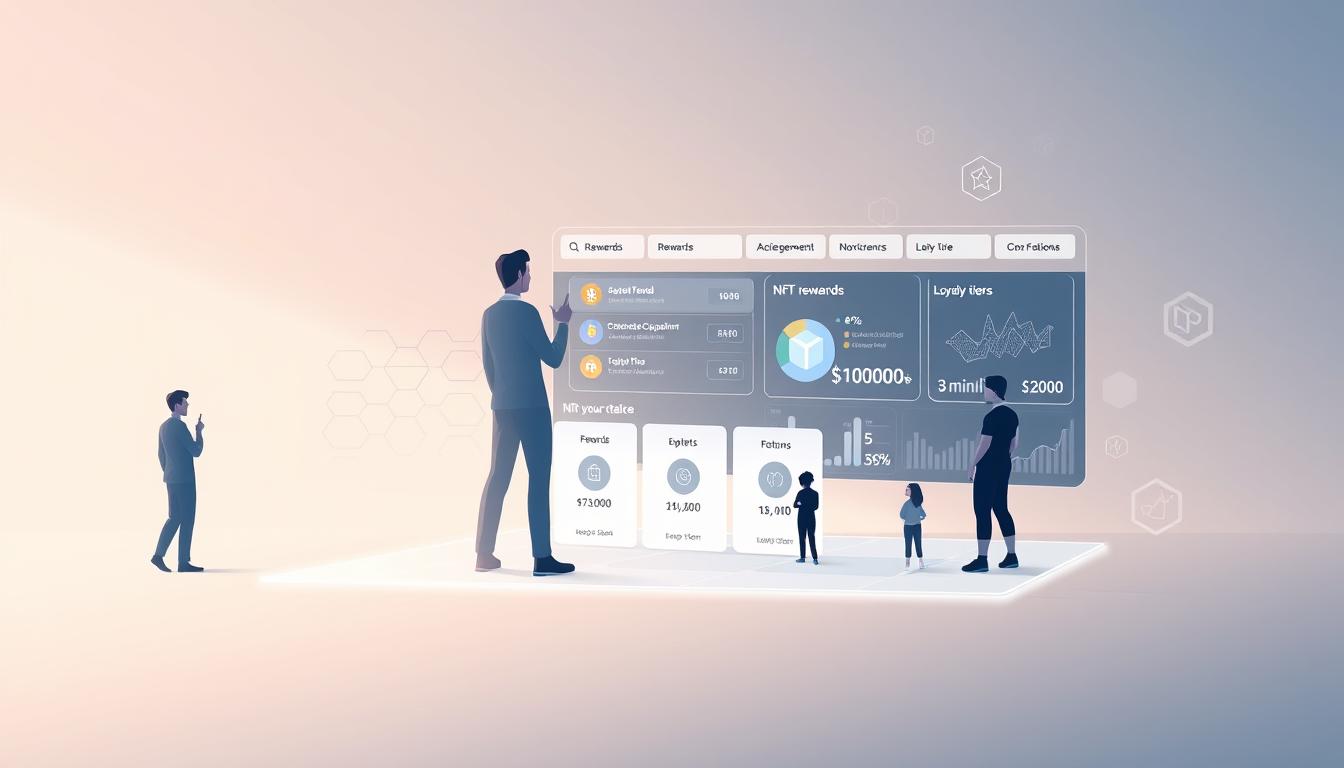Now Reading: AI Powered Crypto Exchange Platform for Advanced Traders
- 01
AI Powered Crypto Exchange Platform for Advanced Traders
AI Powered Crypto Exchange Platform for Advanced Traders

The financial landscape is undergoing a massive shift. Over 75% of financial firms now use advanced technologies in their daily operations. A remarkable 91% report significant benefits from these investments.
This transformation is especially clear in digital asset markets. The market value for projects combining these technologies has surged into the tens of billions. This creates a powerful new ecosystem for market participants.
This guide is designed for experienced individuals looking to gain an edge. We will explore how modern systems use machine learning and complex data analysis. These tools provide a real competitive advantage in fast-moving markets.
Choosing the right intelligent trading system is more critical than ever. The correct tools help maximize profits and manage risk effectively. They are essential for staying ahead of the curve.
Key Takeaways
- A vast majority of financial companies now use advanced technology, with most seeing clear benefits.
- The market value for technology-enhanced digital assets is measured in tens of billions of dollars.
- Modern systems leverage sophisticated algorithms to analyze market data and identify opportunities.
- Selecting the right automated tool is crucial for effective risk management and profitability.
- These advanced systems are reshaping how sophisticated participants interact with the market.
Introduction to the Future of AI in Crypto Trading
A new era in digital asset markets has arrived, marked by the integration of sophisticated analytical tools. These systems process information at speeds and scales beyond human capability. They identify patterns and opportunities that traditional methods often miss.
The transformation extends across global financial markets. Intelligent systems now handle complex data analysis continuously. This represents a fundamental shift in how market participants approach trading decisions.
Overview of AI Trends in Financial Markets
Financial markets are embracing advanced technologies at an accelerating pace. Over three-quarters of financial firms now implement these solutions. The benefits include improved accuracy and operational efficiency.
Predictive models analyze massive datasets in real-time. They detect subtle market trends that human analysts might overlook. These systems learn from historical patterns while adapting to current conditions.
The Shift from Manual to Automated Trading
Automation represents the most significant change in modern trading approaches. Systems monitor markets continuously without human intervention. This enables consistent strategy execution based on data-driven analytics.
Emotional decision-making becomes eliminated through automated processes. The technology processes millions of data points simultaneously. It examines price movements, trading volumes, and broader market indicators.
This creates a new paradigm where intelligent analysis provides competitive advantages. Market participants gain actionable insights previously unavailable through manual methods.
Understanding the “AI powered crypto exchange platform”
Intelligent marketplaces for digital assets represent a significant leap beyond traditional systems. They integrate sophisticated algorithms directly into their core infrastructure. This creates a dynamic environment for conducting transactions.
These systems are designed to process information and execute tasks with remarkable efficiency. The goal is to enhance every aspect of the user’s interaction with the market.
Definition and Core Components
At its heart, an intelligent marketplace is built on several key technologies. Machine learning engines identify complex patterns in market behavior.
Natural language processing scans news and social media to gauge market sentiment. Predictive modeling forecasts potential price movements. Automated execution systems manage orders based on pre-set strategies.
These components work together seamlessly. They transform raw information into actionable trading signals.
How Intelligence Transforms the Trading Experience
The experience for users is fundamentally different on these advanced systems. Intelligent tools monitor the markets continuously, day and night. They identify opportunities that are easy to miss with manual methods.
This technology can execute strategies with precision timing. It removes emotional decision-making from the process. Users gain access to deep insights derived from massive amounts of data.
The interface presents complex information in a clear, accessible way. This allows for quick, informed decisions even in fast-moving conditions.
| Feature | Traditional System | Intelligent System |
|---|---|---|
| Market Analysis | Primarily manual, reliant on user input | Continuous, automated analysis of multiple data streams |
| Strategy Execution | User-dependent and potentially delayed | Algorithmic, instantaneous based on real-time conditions |
| Risk Management | Basic alerts and manual oversight | Proactive assessment and automated safety features |
| Insight Depth | Limited by human analysis capacity | Powered by processing vast, diverse datasets |
Benefits of AI-Driven Trading for Advanced Traders
Advanced analytical tools are revolutionizing how professionals approach market strategies. These systems provide distinct advantages that separate seasoned participants from casual observers.
The technology transforms complex decision-making processes into streamlined operations. This creates opportunities for consistent performance in volatile conditions.
Maximizing Profitability with Smart Automation
Smart automation executes strategies with precision timing that humans cannot match. It identifies fleeting opportunities that exist for mere seconds.
These systems remove emotional decision-making from the equation. They operate based on sophisticated algorithmic analysis of market conditions.
The result is optimized entry and exit points for each trade. This maximizes profitability while minimizing unnecessary risks.
Real-Time Analytics and Market Insights
Real-time analytics process vast streams of information continuously. They draw from multiple sources including exchanges and blockchain networks.
These tools deliver predictive insights that help anticipate market movements. Machine learning models analyze historical patterns alongside current dynamics.
Traders gain actionable intelligence that informs strategic investment decisions. The combination of analytics and automation creates a powerful advantage for serious market participants.
Key Features and Tools Offered by AI Crypto Exchanges
Modern trading environments are defined by a suite of powerful tools designed for precision and efficiency. These core features transform complex market participation into a streamlined process. They provide the backbone for successful crypto trading operations.
Automation and Customizable Trading Strategies
Comprehensive automation handles tasks from trade execution to portfolio management. This allows traders to implement sophisticated strategies without constant manual oversight.
Customization is a critical advantage. Users can define specific parameters and rules that match their risk tolerance. These trading strategies are then optimized by the system’s analytical capabilities.
Leading services like 3Commas offer advanced order types through SmartTrade terminals. Platforms such as Pionex provide numerous free bots with pre-set strategies, making advanced tools accessible.

Integration of Trading Bots and Backtesting
The integration of specialized bots is a fundamental feature. Grid trading, arbitrage, and DCA bots offer diverse tools for various market conditions.
Cloud-based solutions, like those from Cryptohopper, operate continuously. They eliminate the need for users to keep their own computers running.
Backtesting capabilities are perhaps the most vital tools for risk management. Traders can use historical data to validate their strategies before committing real capital. This process helps refine approaches and identify potential weaknesses.
The synergy of these features creates a robust ecosystem for serious traders on major exchanges. It enhances both performance and operational efficiency.
Evaluating Trading Strategies with AI and Data Analytics
The cornerstone of any robust trading operation is the systematic evaluation of its underlying strategies. Modern tools provide powerful methods for testing and refining approaches before risking real capital. This process is essential for building confidence and ensuring long-term success.
Backtesting with Historical Data
Backtesting allows you to simulate how a specific strategy would have performed using past market information. This provides empirical evidence of a strategy’s potential effectiveness. You can identify strengths and weaknesses by seeing results across different market cycles.
Advanced analytical tools can process years of historical data in minutes. This rapid analysis helps traders refine their parameters and optimize performance.
Optimizing Strategies through Customization
A key advantage of modern systems is the depth of customization available. Traders can adjust dozens of parameters to align a strategy with their personal goals.
- Entry and Exit Conditions: Define precise rules for opening and closing positions.
- Risk Management: Set stop-loss levels and position sizing based on your tolerance.
- Performance Targets: Fine-take profit targets to lock in gains.
This level of control ensures that your trading strategies are tailored to your unique approach.
Diverse Strategy Options for Varied Market Conditions
Different market environments require different tactics. A versatile toolkit includes various strategic approaches.
Grid trading excels in sideways markets. Arbitrage strategies capitalize on small price differences. Trend-following methods perform well during strong directional movements.
Having access to a range of proven strategies allows you to adapt quickly to changing conditions. This diversity is a significant advantage for managing a portfolio of digital assets.
Security and Risk Management in AI Crypto Platforms
Modern trading systems prioritize user protection through multi-layered security architectures. These frameworks address both external threats and internal vulnerabilities. Comprehensive risk management protocols ensure assets remain secure during market fluctuations.
Fraud Detection and Biometric Authentication
Advanced security measures include real-time monitoring for suspicious activities. Systems analyze transaction patterns to detect anomalies that indicate potential fraud. This proactive approach identifies threats before they can cause damage.
Biometric authentication adds crucial protection layers. Fingerprint scanning and facial recognition prevent unauthorized access. These technologies verify identity even when login credentials become compromised.

Proactive Risk Assessment and 2FA Implementation
Intelligent systems continuously evaluate potential security risks. They monitor network traffic and login attempts for unusual patterns. This allows for automatic blocking of malicious activities before breaches occur.
Two-factor authentication has become standard practice across reputable services. This requires multiple verification methods for sensitive account actions. It provides essential protection against unauthorized withdrawals and changes.
Effective risk management extends beyond basic security protocols. It includes trading controls like position limits and automated stop-loss mechanisms. These features protect users from excessive losses during volatile conditions.
Enhancing Market Analysis and Predictive Insights Using AI
Sophisticated analytical systems are transforming how traders interpret complex market information. These tools process vast streams of data to create a comprehensive picture of current conditions. This enhanced analysis provides a significant edge in fast-moving environments.
Real-Time Market Data and Trend Detection
Modern systems monitor price movements and volume changes across multiple venues simultaneously. This real-time data processing allows for instant responses to developing situations. Traders can capitalize on fleeting opportunities that manual methods often miss.
Trend detection algorithms identify emerging market trends in their earliest stages. They recognize pattern formations and momentum shifts before they become obvious. This early warning system signals potential trading advantages.
Predictive analytics leverage machine learning to forecast probable price movements. These models analyze historical correlations alongside current sentiment indicators. The resulting insights offer quantifiable confidence levels for future directions.
Leveraging AI for Regulatory Compliance
Intelligent systems also enhance market analysis by ensuring activities align with legal requirements. They automatically flag suspicious patterns that might indicate manipulation. This proactive approach helps maintain market integrity while protecting participants.
Platforms like DexCheck provide specialized tools for tracking influential traders and measuring community attention. These analytics deliver deeper insights into asset popularity and smart money movements. The combination creates a powerful informational advantage for serious market participants.
Integration, APIs, and Developer Tools for Seamless Experience
Developer-focused infrastructure has become essential for creating sophisticated trading solutions that bridge multiple systems. These integration capabilities form the backbone of modern trading ecosystems.

Custom API Integrations and Blockchain Data Access
Custom API integrations represent critical infrastructure components. They enable seamless connectivity between trading systems and multiple venues.
Developers benefit from comprehensive tools that provide programmatic access to trading functions. This enables creation of custom applications and automated systems.
Blockchain data access through specialized APIs delivers real-time information directly from networks. This includes transaction data and wallet activities essential for analysis.
Leading platforms offer REST APIs for standard interactions and WebSocket connections for real-time streaming. Webhook implementations trigger automated responses to market conditions.
Services like DexCheck provide unified APIs for analytics and sentiment analysis. These cost-effective solutions make advanced data access feasible for individual traders.
Robust developer tools and comprehensive documentation create seamless experiences. Both technical and non-technical users can leverage powerful integration capabilities.
User Experience and Customer Support in Advanced Platforms
The quality of user interaction and support services often determines long-term success with any sophisticated trading system. Well-designed interfaces make complex tools accessible to all experience levels.
Clear dashboards present market data and portfolio information efficiently. This organization helps users make quick decisions during fast market movements.
Reliable assistance is crucial for resolving issues promptly. Leading services offer multiple contact methods for their customer support teams.
| Support Method | Response Time | Issue Complexity | Availability |
|---|---|---|---|
| Live Chat | Immediate | Basic to Moderate | 24/7 |
| Email Ticketing | Several Hours | Complex Technical | Business Hours |
| Knowledge Base | Instant | Basic Questions | Always Available |
| AI Chatbot | Instant | Routine Inquiries | 24/7 |
Automated chatbots handle common questions about features and procedures. They provide instant answers while escalating complex cases to human specialists.
Mobile applications extend accessibility for active users. These apps allow portfolio monitoring and trade execution from anywhere.
Knowledgeable support teams understand both technical operations and market nuances. Their expertise minimizes disruption when users encounter challenges.
Investments in interface design and assistance services create environments where users can focus on strategy. This comprehensive approach to customer support enhances the overall experience.
Regulatory Compliance, Data Security, and Ethical AI Practices
The integrity of modern financial systems hinges on robust compliance protocols and transparent practices. These foundations create environments where participants can operate with confidence.

Adhering to KYC and AML Standards
Leading crypto exchanges implement comprehensive identity verification processes. Know Your Customer protocols authenticate user identities during registration.
Anti-Money Laundering systems monitor transaction activities for suspicious patterns. This dual approach prevents unauthorized activities while maintaining regulatory compliance.
Secure wallets and data protection measures safeguard sensitive information. Regular audits by blockchain security firms identify potential vulnerabilities.
Ensuring Transparency and Trust in Trading Operations
Transparent operations build lasting trust between platforms and users. Clear disclosure of fee structures and execution policies enables informed decisions.
Ethical algorithmic systems operate without hidden biases or manipulative behaviors. This fairness ensures equal opportunity for all market participants.
Effective risk management includes proper licensing and regulatory adherence. These security measures distinguish reputable crypto exchanges from less trustworthy alternatives.
User education about compliance requirements completes the security framework. Transparent communication about data handling builds confidence in the exchange ecosystem.
Tips for Advanced Traders to Maximize Profitability
Seasoned market participants can significantly enhance their performance by implementing a structured approach to intelligent trading systems. The most successful traders begin by clearly defining their financial objectives and risk tolerance levels.
This foundational step ensures all subsequent decisions align with personal goals. It creates a framework for evaluating different trading approaches and tools.
Leveraging AI Insights for Smart Trading Decisions
Modern analytical systems synthesize multiple data streams to provide comprehensive market views. These insights combine technical indicators, sentiment analysis, and predictive modeling.
Traders gain valuable information about optimal entry and exit timing. The technology identifies patterns that human analysis might overlook during fast market movements.
Smart money tracking capabilities reveal where institutional participants are positioning themselves. This gives advanced traders early signals about potential market directions.
Effective Portfolio Management Using AI Tools
Automated portfolio rebalancing maintains target asset allocations without constant manual intervention. Systems like Shrimpy automatically adjust holdings to preserve desired risk profiles.
These tools implement systematic profit-taking during favorable conditions. They also execute defensive repositioning when risk indicators signal potential downturns.
Effective management combines automated tools with disciplined risk management strategies. Position sizing rules and diversification principles protect capital during strategy underperformance.
Continuous monitoring ensures trading approaches remain effective as market conditions evolve. Regular performance reviews allow for parameter adjustments that optimize results.
The most profitable traders combine sophisticated tools with sound trading principles. This balanced approach creates sustainable advantages in dynamic markets.
Conclusion
The journey through modern trading systems reveals a clear path forward for serious market participants. This guide has detailed how these advanced tools enhance security, analysis, and strategy execution.
Adopting these technologies is no longer optional for achieving a competitive edge. They provide deep insights and automate complex trading strategies.
Choosing the right intelligent solution requires evaluating key features like risk management and integration capabilities. The future of digital asset markets is here.
By leveraging these sophisticated systems, traders can navigate volatile conditions with greater confidence and efficiency. The evolution continues to create new opportunities.
FAQ
What is an AI-driven crypto exchange?
It is a digital marketplace that uses artificial intelligence to enhance trading activities. These systems analyze market trends, automate strategies, and provide deep insights to help users make informed decisions.
How does this technology improve my trading strategies?
By using data analytics and backtesting tools, the system evaluates your plans against historical information. This helps optimize approaches for better performance across different market conditions.
What security measures are in place to protect my assets?
Security is a top priority. Platforms implement strong measures like two-factor authentication (2FA), biometric logins, and proactive fraud detection to safeguard your investment and wallets.
Can I integrate my own tools or bots with the exchange?
Yes. Most advanced solutions offer custom API integrations. This gives developers and traders access to blockchain data, allowing for seamless connection with external applications and models.
What kind of customer support can I expect?
You receive dedicated support to resolve issues quickly. Teams are available to assist with platform use, risk management, and maximizing the efficiency of your trading activities.
How does the platform help with regulatory compliance?
The service adheres to strict standards like KYC and AML. It uses smart analysis to ensure transparency and trust in all operations, keeping your activities compliant.
Are there tools for managing portfolio risk?
Absolutely. You get access to advanced analytics and risk assessment features. These tools provide insights to help you manage your money and assets effectively, minimizing potential losses.














